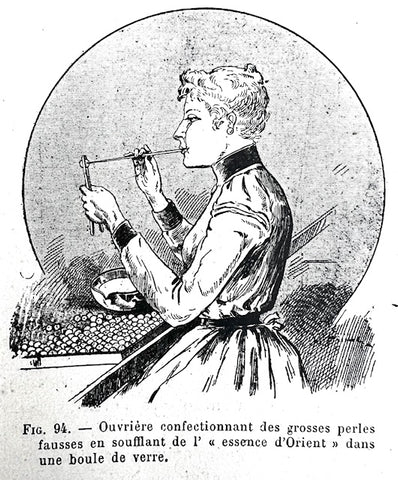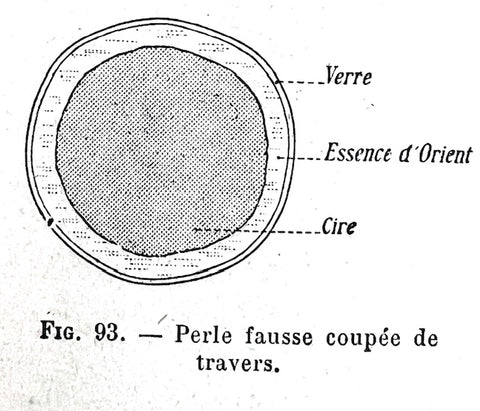How to recognize fake pearls and stones
Beware of imitation jewelry and how to recognize them.
Today, more and more precious stones or pearls that adorn jewelry are being imitated, and the cleverest cannot recognize the deception. It is enough for them to be worn casually for people to believe they are real. This fact is so well-known that we see high society ladies or actresses resorting, out of fear of theft, to wearing fake diamond jewelry while keeping their precious jewels in safes. Since the pleasure of exhibiting jewelry often lies in being admired and, above all, a little envied, the desired result is achieved nonetheless.
The most targeted precious stone by fraudsters is, naturally, due to its high commercial value, the diamond. The base of most of its imitations is a special glass called strass, which owes its high refraction to the presence of about 50% lead oxide in its composition. It was already known in the Middle Ages - if not even before - and was used for the same purpose as today.
By adding traces of coloring substances, most other precious stones are also imitated: rubies (10% antimony glass, 1% cassius purple, and excess gold); sapphire (25% cobalt oxide); topaz (40% antimony glass, 1% cassius purple); emerald (8% copper oxide and 0.2 chrome oxide); amethyst (25% cobalt oxide and some manganese oxide); garnet (with a variable amount of cassius purple, depending on the desired shade). As for aventurine, it is imitated with a glass based on potash, soda, lime, and magnesia, colored yellow by iron oxide and containing a large number of fine copper oxide flakes in suspension; the resulting product is valued at 30 to 150 francs per kilogram, depending on its beauty. (1930)
In the same fraudulent purpose, "double stones" are used, which are composed of a genuine stone on top and strass underneath. The line of separation of the two masses is concealed in the jewelry. Sometimes, the stone is entirely made of strass, but a reflective layer similar to that in mirrors is placed underneath, reflecting light rays towards the upper facets.

Easy-to-recognize altered stones
Another widespread type of fraud is passing off low-value stones as high-priced ones. Since transparent or differently colored hyaline quartz is very common in nature, stones that resist filing perfectly (which many people mistakenly believe is characteristic of a real stone) can be obtained at very low prices, displaying a remarkable range of colors admired in genuine gemstones.
It was even believed at the beginning of the Middle Ages that topazes and rubies could be transformed into real diamonds under the influence of transmutation ideas prevalent at the time. To "whiten" a sapphire, it is enough to wrap it in chalk and gradually subject it to intense heat: it is then slowly cooled to obtain a completely discolored appearance resembling a diamond.
However, what is most imitated today are fine pearls, whose delicate and ethereal appearance would seem to be immune to fraud.
The industry of fake pearls, dating back to 1680, is unanimously attributed to a rosaries and religious objects manufacturer, a "patenotrier" as they were called then, named Jacquin, residing in Passy. Numerous attempts may have been made before, but no chronicle mentions them, and Jacquin remains the inventor of this industry that soon became a veritable source of wealth. It is very prosperous in France and Italy, employing many workers.

